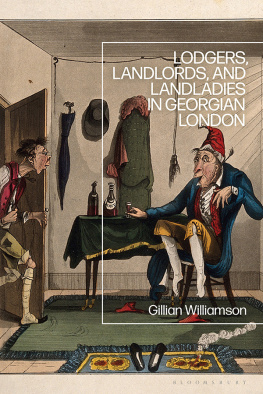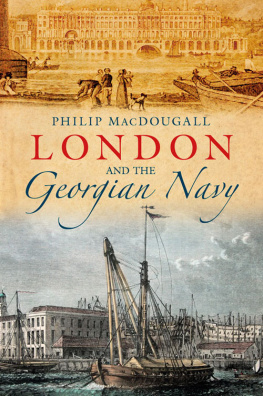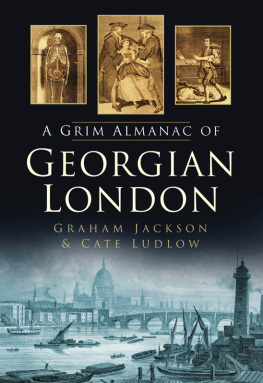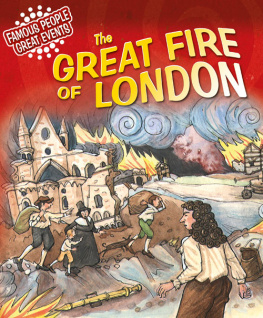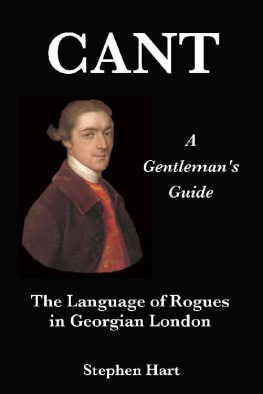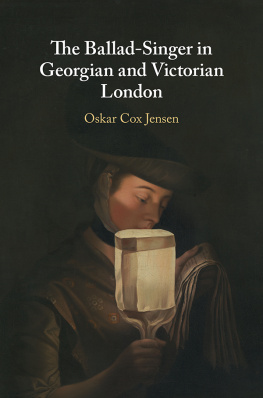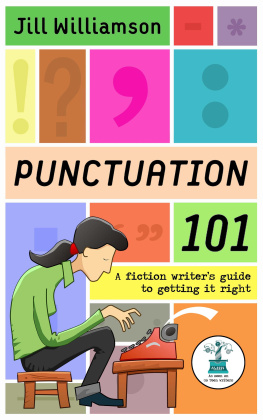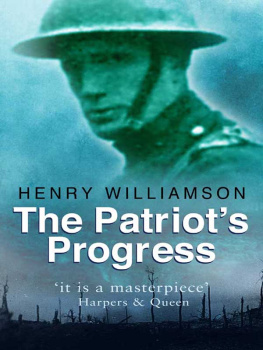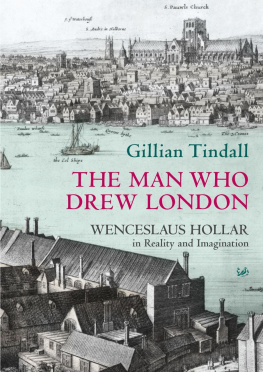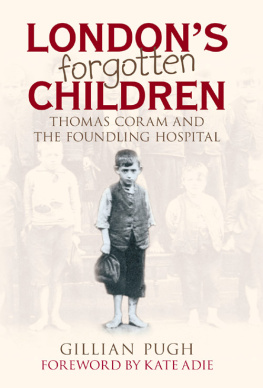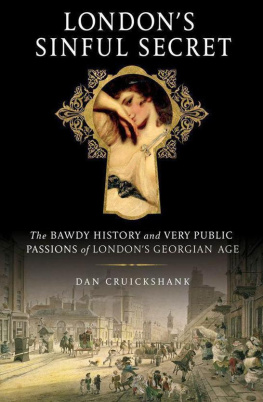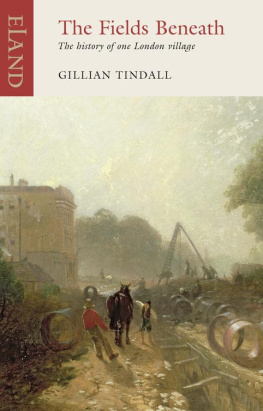Lodgers, Landlords, and Landladies in Georgian London
Lodgers, Landlords, and Landladies in Georgian London
Gillian Williamson
Lodgers, Landlords, and Landladies in Georgian London has been several years in the making. I began thinking about the eighteenth-century experience of life in London lodgings when I was researching my PhD thesis on masculinity in the Gentlemans Magazine. I was reading many published diaries and letters to get a feel for the men and women who comprised its readership. It soon became apparent that many of them had at some time lived in this way, in a strangers home, and that this was no cause for embarrassment. It led me to thinking about what the significance of this was for the Georgian concept of home, both for the lodgers, and for the men and women who were their landlords and ladies. Out of this thinking came this study.
In bringing this book to the press I have stood on the shoulders of giants: both those scholars whose published work I have relied upon to guide me and those who encouraged me to believe this was a worthwhile subject and helped me to shape it, especially Vanessa Harding, Tim Hitchcock and Jerry White. My thanks must also go to all the friends and colleagues, too many to name but I trust you know who you are, at the Institute of Historical Research seminar, British History in the Long Eighteenth Century, and the Womens Studies Group 15581837. From them I have derived support, information and suggestions, and sociability. I have felt my way through my subject at conferences and workshops: The Working Class at Home 17702017 at the Geffrye Museum, the Womens Studies Group annual workshops, the British Society for Eighteenth-Century Studies and the International Society for Eighteenth-Century Studies conferences, and Hogarths Moral Geography at the Paul Mellon Centre for Studies in British Art. I am most grateful to all those who listened and offered their thoughtful questions and comments. Finally, I must thank wholeheartedly those who kindly read through my draft manuscript and offered corrections and new insights: Amanda Goodrich, Karen Lipsedge, Bloomsburys anonymous peer reviewer, and my editors. Any errors remaining are, of course, entirely my own. Finalizing both text and images has been difficult in pandemic-stricken times. Many libraries and their services were closed and suspended. I have been impressed by, and am immensely grateful to, the independent Gibson Library on my doorstep in Saffron Walden, Essex. The depth and breadth of its historic and contemporary collections have been a lifesaver.
It is a testament to the enduring issues of lodging that I have enjoyed so many contemporary anecdotes, absurd, tragic, and heartening, from family and friends: the landlady who served up cornflakes with custard (and the occasional stray dog-hair) as a pudding to her boarders, my mother-in-law who had her house exorcised after her relationship with a student-lodger soured, the kind landlady who gave up her own bed to a lodger who needed to move in before the old lodger left, and my sister Liz, still friends with her London landlady across thirty-five years and the Atlantic Ocean. As you will see, there are eighteenth-century parallels for all these experiences.
And that brings me more particularly to family and friends. They have all once again endured with love and good humour my obsession with a project. While I have been looking back to the past there has been new life: my five granddaughters Joanie, Ivy, Clodagh, Hattie, and Avery to whom I dedicate this book.
Biographical information
Dates are included to avoid ambiguity and are taken from the ODNB (see Abbreviations) or from internal sources in autobiographies and biographies.
Predecimal British currency (before 1971)
One pound () was divided into 20 shillings (s.) or 240 pence (d.). There were therefore 12d./pence to a shilling. A guinea was worth 1 1s.
There were gold five, two, one, and half guinea coins. Crowns (5s.), half crowns (2s. 6d.), 6d., and 3d. coins were all silver, as were pennies and 2d. coins until the introduction of 1d. and 2d. copper coins in 1797. The last silver penny was minted in 1820. Farthings (d.) and halfpence (d.) were made from copper.
Long-form titles
Many eighteenth-century works have very long titles. To avoid excessively heavy footnotes these have been given in a shortened form with the full title in the Bibliography.
BL | British Library |
BM | British Museum |
CUP | Cambridge University Press |
CWAC | City of Westminster Archives Centre |
GM | Gentlemans Magazine |
HUP | Harvard University Press |
LMA | London Metropolitan Archives |
LWL | Lewis Walpole Library |
MC | Morning Chronicle |
NPG | National Portrait Gallery |
OBOL | Proceedings of the Old Bailey (www.oldbaileyonline.org, version 7.2, 18 July 2016) |
ODNB | Oxford Dictionary of National Biography (https://www.oxforddnb.com/) |
OUP | Oxford University Press |
RCT | Royal Collections Trust |
SofL | Survey of London |
TNA | The National Archives (https://www.nationalarchives.gov.uk/) |
UCL | University College London |
YUP | Yale University Press |
In 1785 the junction of Compton Street, Soho, with Greek Street was a typical busy location in the parish of St Anne Soho in the West End of London. The streets were lined with shops and workshops whose occupants lived above them, interspersed with residential houses, their householders largely drawn from the commercial and professional classes. The freeholds formed part of the aristocratic Portland Estate which had been laid out on open fields from the late- seventeenth century onwards. When John Rocque published his map of London in 1746 the area had become a well-established and densely-built urban area of the genteel, terraced, and brick-fronted two pair stairs and an attic dwellings we think of as quintessentially Georgian. It had already seen several phases of partial redevelopment.
On the late evening of Thursday 16 June 1785 the sun was just setting at the end of another hot, dusty summers day, but there was some relief from the heat as a light breeze stirred.her three stepchildren, her sister Ann Murrray, and her maid Ann Owen. Mrs Barker unbarred the street door and they ran out.
Someone summoned the parish fire engine, and the watchmen and heroic neighbours worked through the night to evacuate people and protect their bundled goods from the light-fingered among those who gathered to watch. Ropes were used to haul surgeon Andrew Nihell from the rubble of a collapsed building. When daylight came it was a sorry scene. Fifteen houses on Compton Street and Greek Street were destroyed and others in the area left severely damaged. Fortunately, no one had died, though Mrs Gapper, who had only moved into Greek Street three days before, miscarried the next day.


